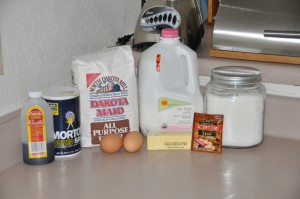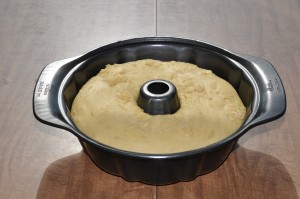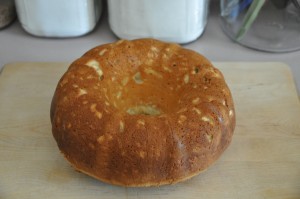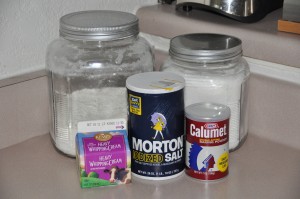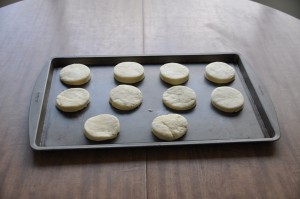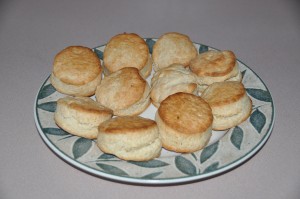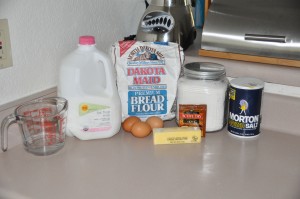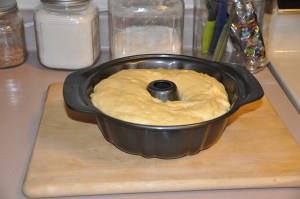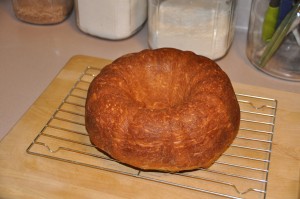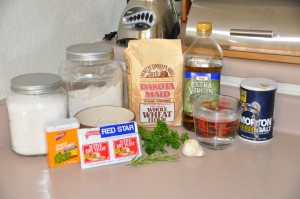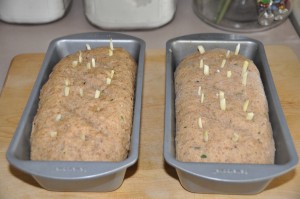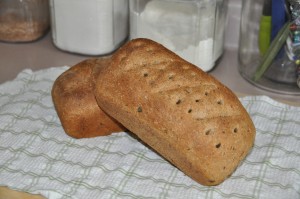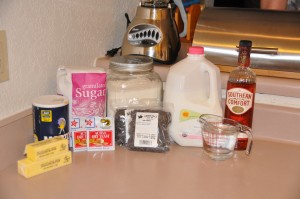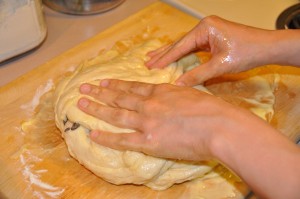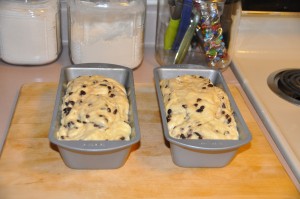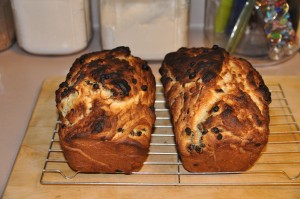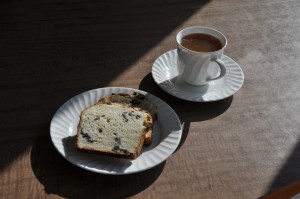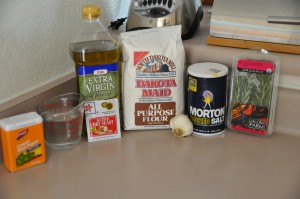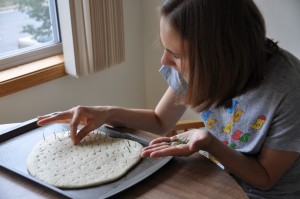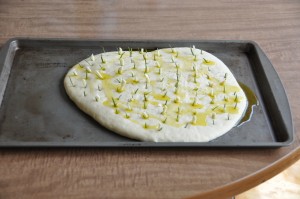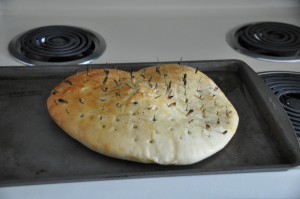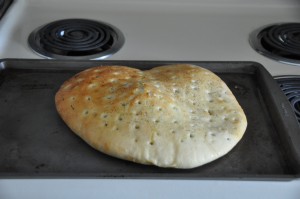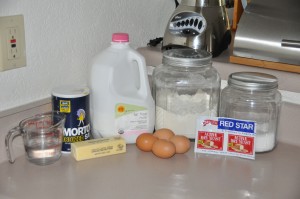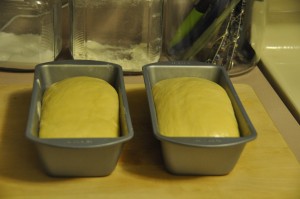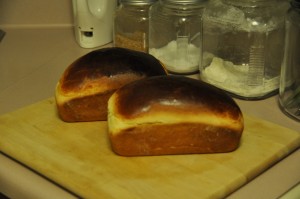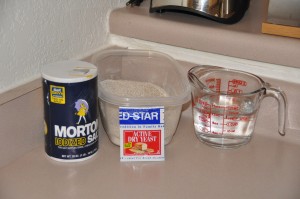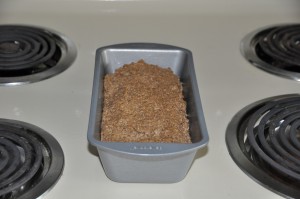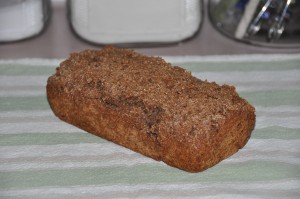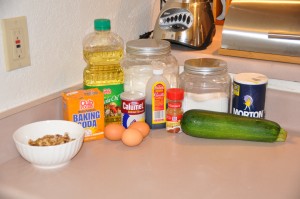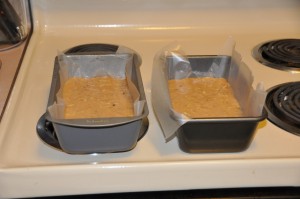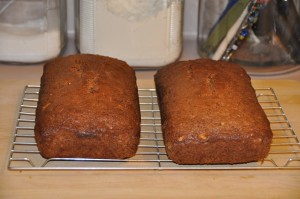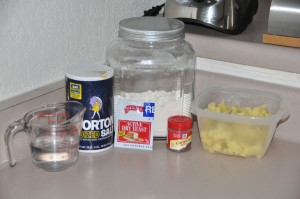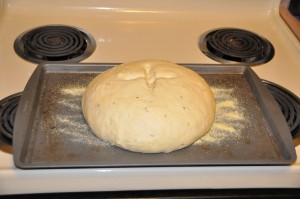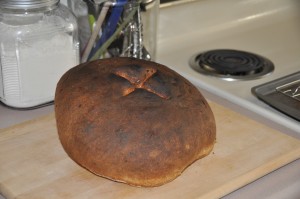“A light, rather sweetish, easy-to-make bread that is similar to Sally Lunn.”
-James Beard, Beard on Bread
Yesterday marked the official halfway mark for the Brooks Bakes Bread project: I made loaf number 52, Golden Cake Batter Bread. The recipe can be found on the James Beard Foundation’s website.
Here are the ingredients:
The recipe starts out like a cake recipe: I mixed all the ingredients, except for 2 cups of flour, together with an electric mixer to form a thin batter. Next, I mixed in the remaining two cups of flour into the batter to make a thicker, more dough-like batter. I let this mixture rise for one hour, stirred it down, and let it rise for another 45 minutes.
Since I was concerned that my kitchen was too cool to allow for a good rise, I set my oven to “warm”, let it heat up, and then turned it off. I placed the dough in the slightly-warmed oven for both of its risings.
Mindful of the thick, tough crust that developed on my Sally Lunn bread, I pulled the bread out of the oven after only 25 minutes at 350 degrees. It was perfect: fully baked and golden, but not overly browned.
Golden Cake Batter Bread is very similar to Sally Lunn–perhaps a bit sweeter, but it shares the same rich buttery flavor and spongy texture. When cooled, it makes excellent toast.
In the past 6 months, I have baked 52 bread recipes, most good, some mediocre, a few downright inedible (Prune Bread, I’m thinking of you!); washed innumerable dishes; hauled home at least a dozen sacks of flour; and logged hours blogging about it all. It has been a lot of work, and sometimes additional stress. But taste of fresh bread, the joy of discovering a new recipe, and the sense of accomplishment more than makes up for everything. I can’t wait to see where the next 52 loaves take me.

